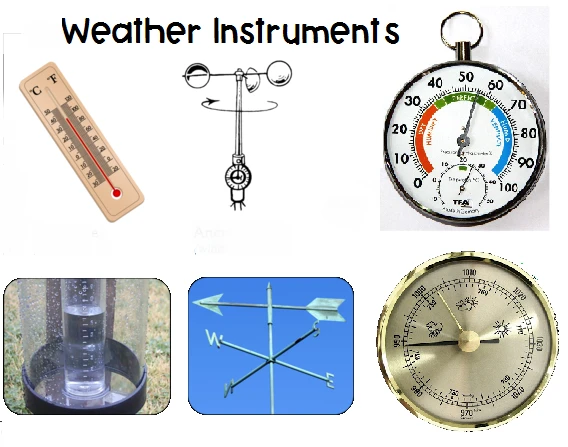
# Weather Gauges and Instruments for Accurate Meteorological Measurements
## Introduction to Weather Measurement Tools
Weather gauges and instruments play a crucial role in meteorological science, providing essential data for weather forecasting, climate research, and various industrial applications. These tools help scientists and meteorologists collect precise measurements of atmospheric conditions, enabling better understanding and prediction of weather patterns.
## Essential Weather Gauges and Their Functions
### Thermometers: Measuring Temperature
Thermometers are fundamental instruments for measuring air temperature. Modern digital thermometers provide quick and accurate readings, while traditional mercury or alcohol thermometers remain reliable options. Some advanced models can record minimum and maximum temperatures over specific periods.
### Barometers: Tracking Atmospheric Pressure
Barometers measure atmospheric pressure, which is crucial for weather prediction. Mercury barometers were historically common, but aneroid barometers and digital barometers are now more widely used. These instruments help identify approaching weather systems and changes in altitude.
### Hygrometers: Determining Humidity Levels
Hygrometers measure the amount of moisture in the air, known as humidity. Psychrometers (wet-and-dry bulb thermometers) are traditional types, while modern electronic hygrometers use capacitive or resistive sensors for more precise measurements.
## Precipitation Measurement Instruments
### Rain Gauges
Rain gauges collect and measure liquid precipitation over a set period. Standard rain gauges have a funnel that directs water into a measuring cylinder, while tipping bucket rain gauges automatically record rainfall amounts. Some advanced models can differentiate between rain, snow, and hail.
### Snow Gauges
Specialized snow gauges measure snowfall accumulation. These often include heated collection surfaces to melt snow for accurate water equivalent measurements. Ultrasonic snow depth sensors provide non-contact measurements of snow accumulation.
## Wind Measurement Devices
### Anemometers
Anemometers measure wind speed. Cup anemometers with rotating cups are common, while vane anemometers combine wind speed and direction measurement. Ultrasonic anemometers provide highly accurate readings without moving parts.
### Wind Vanes
Wind vanes indicate wind direction, typically mounted on weather stations alongside anemometers. Modern electronic wind vanes use potentiometers or digital encoders to provide precise directional data.
## Advanced Meteorological Instruments
### Weather Stations
Complete weather stations combine multiple instruments into integrated systems. These automated stations can measure temperature, humidity, pressure, wind speed and direction, rainfall, and sometimes solar radiation. Data is often transmitted wirelessly for remote monitoring.
### Ceilometers and Radiosondes
Ceilometers measure cloud height and vertical visibility using laser or light detection technology. Radiosondes are balloon-borne instruments that measure atmospheric parameters at various altitudes, transmitting data back to ground stations.
## Importance of Proper Instrument Placement
For accurate measurements, weather instruments must be properly sited. Thermometers should be placed in shaded, ventilated areas at standard heights (typically 1.5-2 meters above ground). Rain gauges need open areas away from obstructions, while wind instruments should be mounted at standard heights (usually 10 meters) above ground level.
## Maintenance and Calibration
Regular maintenance and calibration ensure instrument accuracy. This includes cleaning sensors, checking for damage, and comparing readings with reference instruments. Many professional meteorological organizations follow strict calibration schedules to maintain data quality.
## Conclusion
Weather gauges and instruments form the backbone of meteorological observation. From simple thermometers to sophisticated automated weather stations, these tools provide the data necessary for understanding weather patterns, predicting storms, and studying climate change. As technology advances, these instruments continue to improve in accuracy, reliability, and data collection capabilities.
Keyword: weather gauges instruments